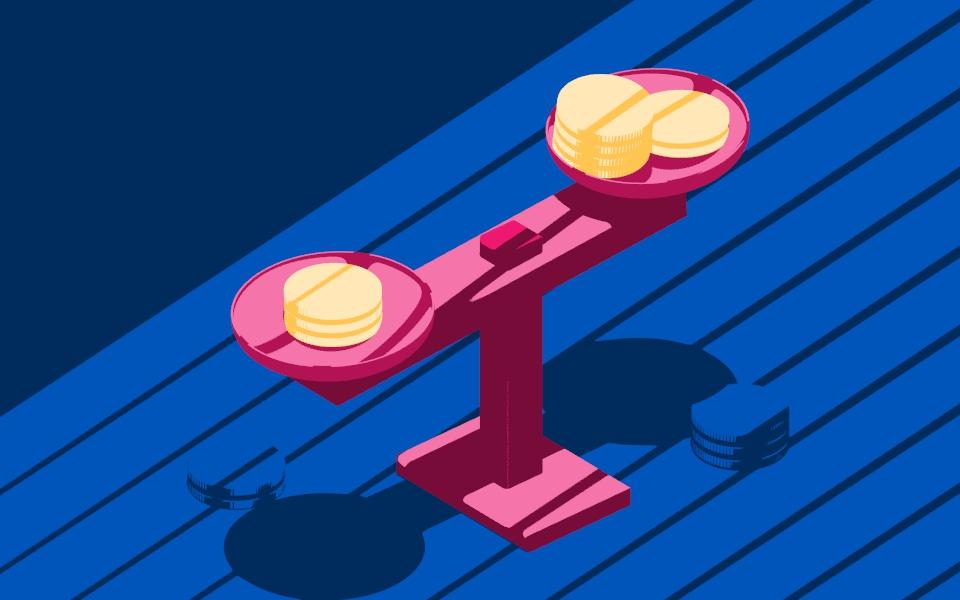With the barriers to accessing quick, collateral-free loans and credit reduced, consumer lending is projected to have an annual growth rate of 4.68%. As the demand for consumer credit grows and the lending market gets bigger, this potentially poses several risks for lenders. One of the ways to mitigate these risks is to perform necessary checks and assessments to determine potential borrowers’ eligibility and affordability for credit facilities. This is where the Mono Creditworthiness API comes in.
What is the Mono Creditworthiness API?
We built the Mono Creditworthiness API to help credit businesses in Nigeria securely assess the financial standing of a user and check that they do not pose a lending risk to their business. The creditworthiness endpoints evaluate the user's historical financial data and cash flow behaviour to determine if they are creditworthy or not.
Using data points like the requested principal loan amount, loan interest rate, tenor and credit history check, you can assess whether the borrower can afford the requested loan amount or if they can repay the loan.
The Creditworthiness API helps you quickly assess users’ creditworthiness in real time, shorten loan approval times, reduce risk, and improve loan repayment rates.
How does the Mono Creditworthiness API work?
To assess a user's eligibility for credit using the Mono Creditworthiness API, the business needs to provide certain information in the body parameters of the API call. This includes:
The principal: The initial loan amount to be given to the user/potential borrower, e.g. ₦ 5,000,000
The interest rate: The annual interest rate for the loan amount i.e. 5%, which will be passed as an integer parameter in the body as integer
5The term/tenor: This refers to the repayment period in months. This means that a loan to be repaid in 2 years will be passed as integer
24The credit history check: This determines whether Mono should include the user’s credit history information from the Credit Bureau, in the creditworthiness calculation.
The user is then required to link their account through the Mono Widget. When this process is completed, an account _ID is generated for the user which is passed when making a call to the Creditworthiness API.
The API leverages the user’s linked financial data to determine their ability to repay by doing some computation comparing their transaction information with the provided principal, interest_rate , and term. When the credit history check flag is set to true, the API includes credit history data from the credit bureau, along with the user's historical financial data and cash flow behaviour, to assess creditworthiness. If the flag is set to false, only the user’s historical financial data and cash flow behaviour are used in the creditworthiness calculation.
We then send a response via webhooks with a boolean value of the user's ability, the monthly repayment amount, and other details.
Now that you know how it works, let’s get started on how you can integrate this.
How to implement the Mono Creditworthiness API into your product
To get started, here are a few things you need to do:
Create a Mono account here, if you don’t have one
Submit all required business documents and complete the compliance process.
Create an app on the Mono dashboard and select
Connectas your product scope. Here’s how to create an app and choose your product scope.Next, make sure you have your App keys. Here is a guide on how to generate your secret key on the Mono dashboard.
Lastly, add a webhook URL to the app you created, so you can be notified when the user’s financial health and credit eligibility is fully evaluated. You can learn everything you need to know about our webhooks here.
[Remember, you need your App secret key to make calls to any Mono endpoint. The mono-sec-key (secret key) is used in the headers to make a successful request.]
Let’s start the integration process by following the steps below:
1. Connect an account
One of the key parameters for completing the assessment process is the Account_ID of the user. It is the unique identifier for every linked customer account on Mono. This means that your user must have first linked their bank account with Mono and you have obtained the account_id. You can link an account with Mono using the Link Account Endpoint (We also have SDKs available for mobile implementation).
When an account is successfully connected, you can retrieve the account_id in the webhook response as seen in the image below:

Next, you must verify the data status of the account before proceeding to make further calls. You can do this by either querying the Account Details API or handling the account updated webhook- mono.events.account_updated.
The Account Details API and webhook event contain a data status field that returns AVAILABLE or FAILED. An available means that pulling data for the account was successful and failed means that data for this account is unavailable. You can read more about this here.

2. Send a request to the Mono Creditworthiness API
To assess a user’s creditworthiness, you need to send a request to the endpoint below by passing the account_id as a path parameter along with the secret key from the same app used in linking the account:

Next, you need to pass the user’s Bank Verification Number (BVN), the principal, interest rate, and term as body parameters, and set run credit check as true or false. You need to make sure the BVN is valid. if it isn't, the API call will fail. To prevent this, you can validate the user’s BVN using our BVN iGree lookup endpoint.
Kindly note that the principal amount must be inputted in Kobo and every response with an amount is also returned in Kobo.

Sample response data
When the API call is successful, you will get a JSON response with a message status showing successful. This serves as a holding response letting you know that your request is being processed and a webhook with the data will be sent.

3. Integrate the required webhook
We previously mentioned that you need to have webhooks implemented and a webhook URL added to the app on the dashboard to use the Creditworthiness endpoint. This is to enable you to receive notifications when assessment of the user’s financial health and credit eligibility is completed.
Understanding the structure of webhook messages
The webhook contains the following details:
event: This lets you know the kind of webhook response you would be receiving for creditworthiness, it ismono.events.account_credit_worthiness.months_assessed: This is an object containing thestartandendfields. It is the period of the account that was assessed to make a decision. This is typically the time the account was opened till the present however, this assessment period may differ depending on the bank and type of account.summary.can_afford: This is the most important field in the webhook response. It returns a boolean value that lets you know if the user can afford the loan amount plus interest. The valuetruemeans the user can afford andfalsemeans they can’t.summary.monthly_payment: Based on the information provided in the request, the API automatically calculates the monthly repayment amount and returns this in the response.debt: This object field provides a summary of the user's total outstanding debt. It includes a flag indicating whether a credit check was performed and lists the total debt amount. Additionally, it details the debt amounts owed to each institution, including the institution's name and the corresponding amount owed.
Please note that it is important to confirm the receipt of the successful webhook events by sending a 200 OK in response to the webhook.
Example of creditworthiness webhook response ('True'):
When the user is creditworthy, the summary.can_afford field returns as true. This means that the user is creditworthy and can afford the repayment of the loan.

Example of creditworthiness webhook response ('False')
When the user is not creditworthy, the summary.can_afford field returns as false. This means that the user is high-risk and may not be able to afford to repay the loan. Outstanding debt amount is retrieved from the credit bureau and is provided in the response as well.

As a lender, carrying out thorough creditworthiness checks is very important for your business and helps you mitigate lending risks. With the Mono Creditworthiness API, lending businesses can build more secure and faster underwriting processes that allow them to accurately assess potential borrowers’ eligibility for loans and credit facilities.
How to get started with the Mono Creditworthiness API
If you are looking to integrate the Mono Creditworthiness API or any of our credit-focused endpoints into your lending process, you can sign up to get started. If you would like to discuss more tailored options for your business, you can reach out to us at sales@mono.co.
To learn more about integrating the Creditworthiness endpoint, check out our API documentation and if you experience any integration issues, you can email us at integrations@mono.co, and we will be happy to assist.
Questions you might have and answers to them
How much does it cost to use the Mono Creditworthiness endpoint?
When credit check is set to true, each successful API call to the Creditworthiness endpoint cost NGN 500, and when credit check to the credit bureau is set to false, it cost NGN 200.
2. Is the Creditworthiness endpoint available to every business?
Yes, any credit business operating in Africa can use the Mono Creditworthiness endpoint to assess the financial standing of users. However, you need to ensure that the user connects their account to your business using Mono.

















